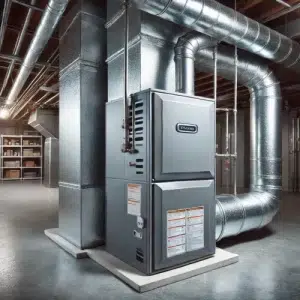Furnace Replacement Cost in Chicago, IL: What You Need to Know
When it comes to keeping your home warm and comfortable, your furnace plays a crucial role, especially during the cold Chicago winters. However, like any other major appliance, furnaces don’t last forever. If you’ve found yourself needing a furnace replacement in the Windy City, understanding the associated costs and factors can help you make an…
When it comes to keeping your home warm and comfortable, your furnace plays a crucial role, especially during the cold Chicago winters. However, like any other major appliance, furnaces don’t last forever. If you’ve found yourself needing a furnace replacement in the Windy City, understanding the associated costs and factors can help you make an informed decision. Here’s a comprehensive guide to help you navigate furnace replacement costs in Chicago, IL.
1. Factors Influencing Furnace Replacement Costs
Several variables can impact the cost of replacing your furnace. Here’s a breakdown of the key factors:
a. Type of Furnace:
The type of furnace you choose can significantly affect the overall cost. There are several types to consider:
- Gas Furnaces: These are the most common and typically the most cost-effective in terms of installation and operation.
- Electric Furnaces: Often more expensive to run due to higher electricity costs, but they may be a better option if you don’t have a natural gas line.
- Oil Furnaces: Less common and often more expensive to maintain, but they can be a viable option in some cases.
- Heat Pumps: These can serve as both heating and cooling systems and may be a good option for moderate climates. In colder areas like Chicago, they might be less efficient in extreme temperatures.

b. Furnace Size and Efficiency:
The size of the furnace is crucial. An undersized furnace will struggle to heat your home, while an oversized one will waste energy and increase your utility bills. Furnace efficiency is also a significant factor. Higher-efficiency models, though more expensive upfront, can save you money in the long run through lower energy bills. Efficiency is typically measured by Annual Fuel Utilization Efficiency (AFUE) ratings:
- Standard Efficiency Furnaces: AFUE ratings between 80% and 89%.
- High-Efficiency Furnaces: AFUE ratings of 90% or higher.
c. Installation Complexity:
The complexity of the installation process can also impact the cost. Factors like ductwork modifications, venting requirements, and accessibility to the installation site can all contribute to higher costs. For example, if your existing ductwork is outdated or incompatible with the new furnace, additional modifications will be needed.
d. Labor Costs:
Labor costs can vary based on your location and the company you choose. In Chicago, labor costs can be higher compared to smaller towns due to the higher cost of living and competitive market rates. However, it’s essential to get quotes from multiple contractors to ensure you’re getting a fair price.
e. Additional Costs:
Don’t forget about potential additional costs such as:
- Permits: Depending on your local regulations, you may need a permit for furnace replacement.
- Old Furnace Removal: Some contractors include this in their quotes, but others might charge extra.
- New Thermostats or Zone Controls: Upgrading to a smart thermostat or adding zone controls can improve efficiency but will add to the overall cost.
2. Average Costs for Furnace Replacement in Chicago
As of the most recent estimates, the cost of replacing a furnace in Chicago can vary widely based on the factors mentioned above. Here’s a rough breakdown:
- Basic Furnace Replacement: $3,000 to $5,000. This typically includes a standard efficiency gas furnace and basic installation.
- Mid-Range Furnace Replacement: $5,000 to $7,500. This range often covers higher efficiency models and potentially some ductwork modifications.
- High-End Furnace Replacement: $7,500 to $12,000 or more. This price range includes top-of-the-line high-efficiency models, advanced features, and extensive installation work.
3. Financing and Rebates
Replacing a furnace is a significant investment, but there are ways to make it more manageable:
Many HVAC companies offer financing plans to help spread out the cost of furnace replacement. Look for options that offer low or no interest rates and flexible payment terms. Additionally, some home improvement loans may be available through banks or credit unions.
b. Rebates and Incentives:
Check if there are any local or federal rebates and incentives for installing energy-efficient furnaces. Programs offered by the state of Illinois, as well as federal tax credits, can help offset the cost of high-efficiency models. Always verify the eligibility requirements and deadlines to take full advantage of these programs.
4. Choosing the Right Contractor
Selecting the right HVAC contractor is crucial for ensuring a smooth installation process. Here are some tips:
- Research and Reviews: Look for contractors with good reviews and ratings. Websites like Yelp, Google Reviews, and Angie’s List can provide valuable insights.
- Get Multiple Quotes: Obtain quotes from several contractors to compare prices and services. Ensure that each quote is detailed and includes all potential costs.
- Verify Licenses and Insurance: Ensure that the contractor is licensed and insured. This protects you from potential liabilities and ensures that the work is performed to code.
- Ask About Warranties: A good contractor will offer warranties on both the furnace and the installation work. Understand the terms and duration of these warranties.
5. Conclusion
Replacing your furnace is a significant investment, but understanding the factors that influence the cost can help you make an informed decision. In Chicago, the cost of furnace replacement varies based on the type of furnace, its efficiency, the complexity of installation, and labor costs. By considering these factors and exploring financing and rebate options, you can make a choice that fits your budget and keeps your home warm and comfortable throughout the winter months.

